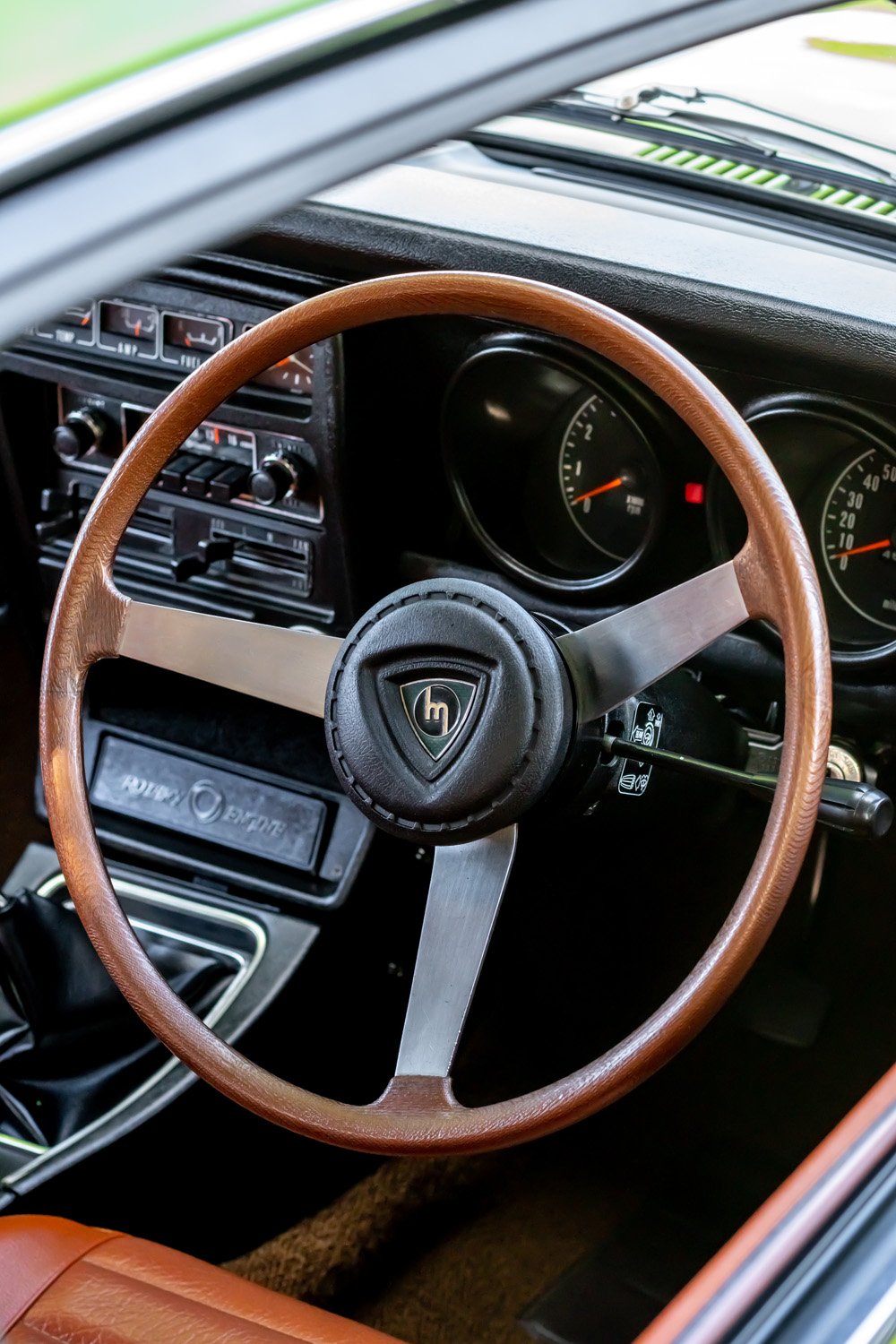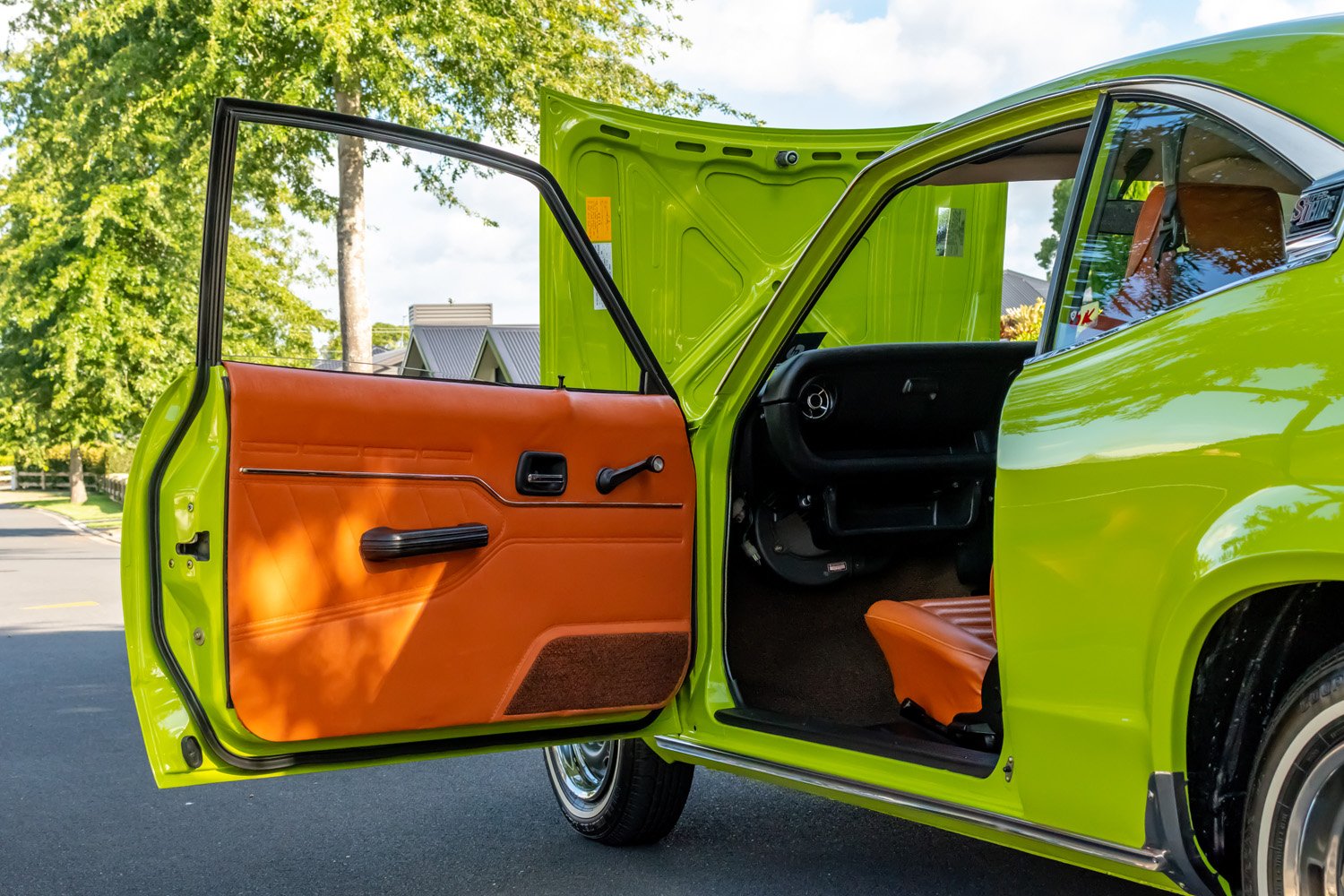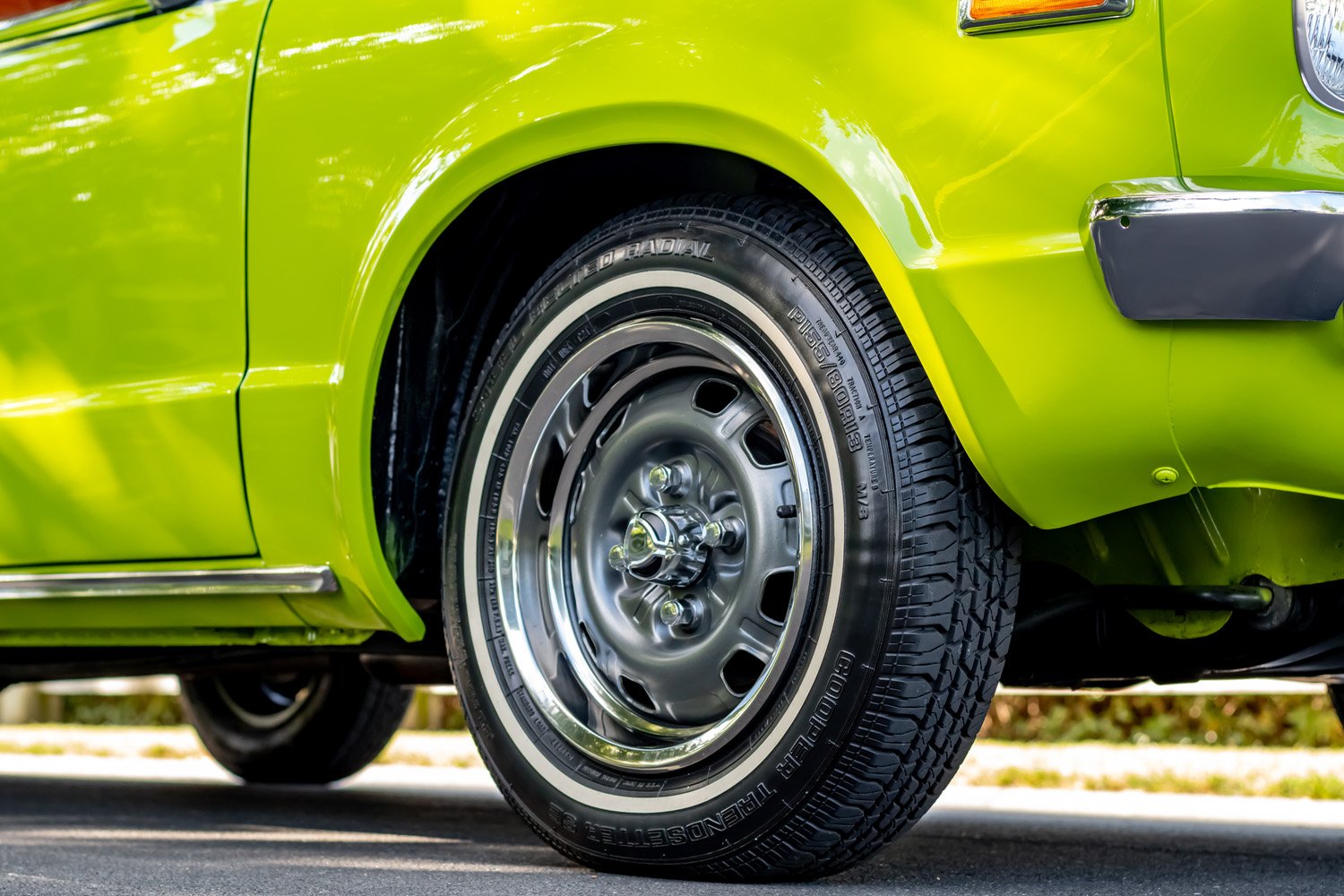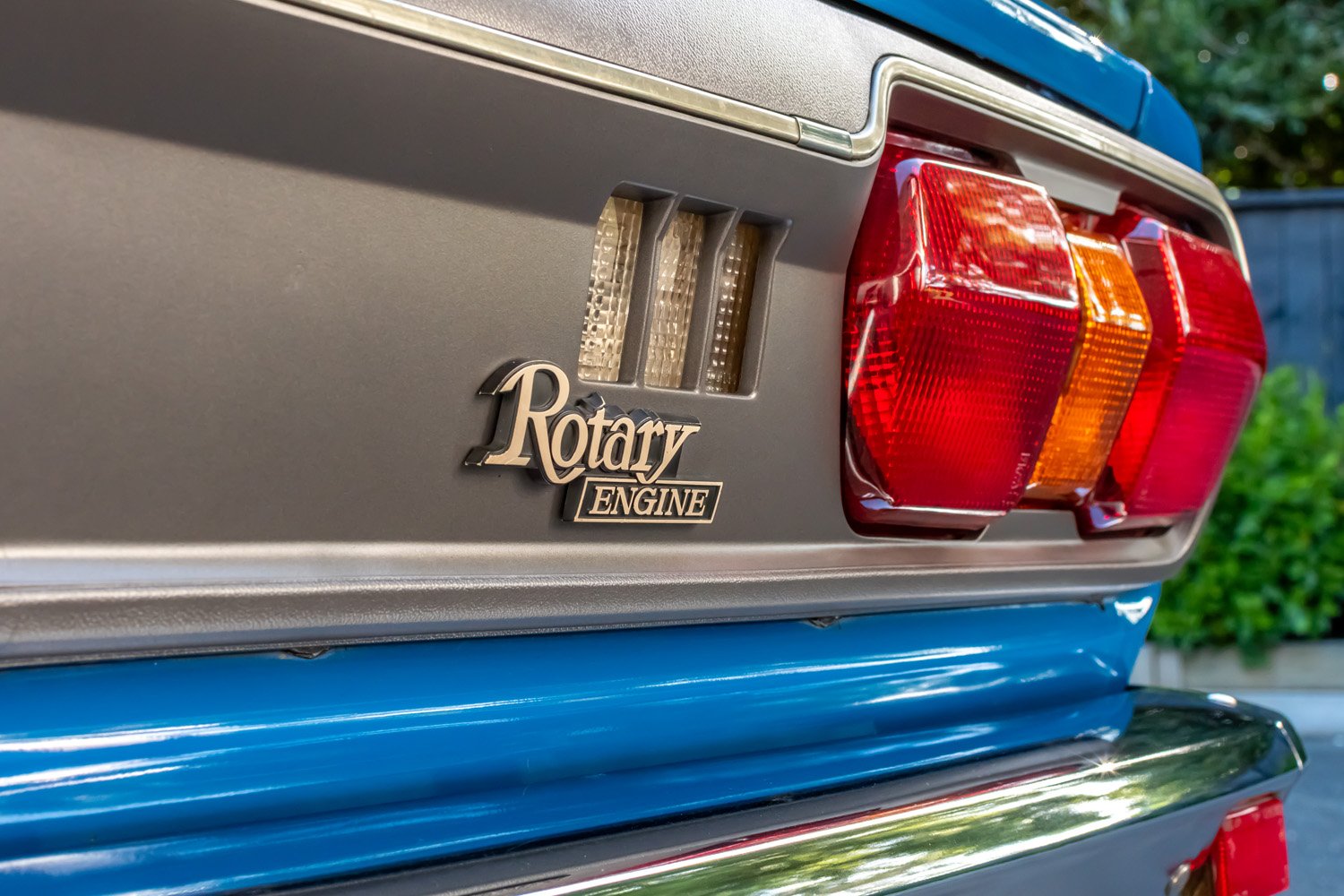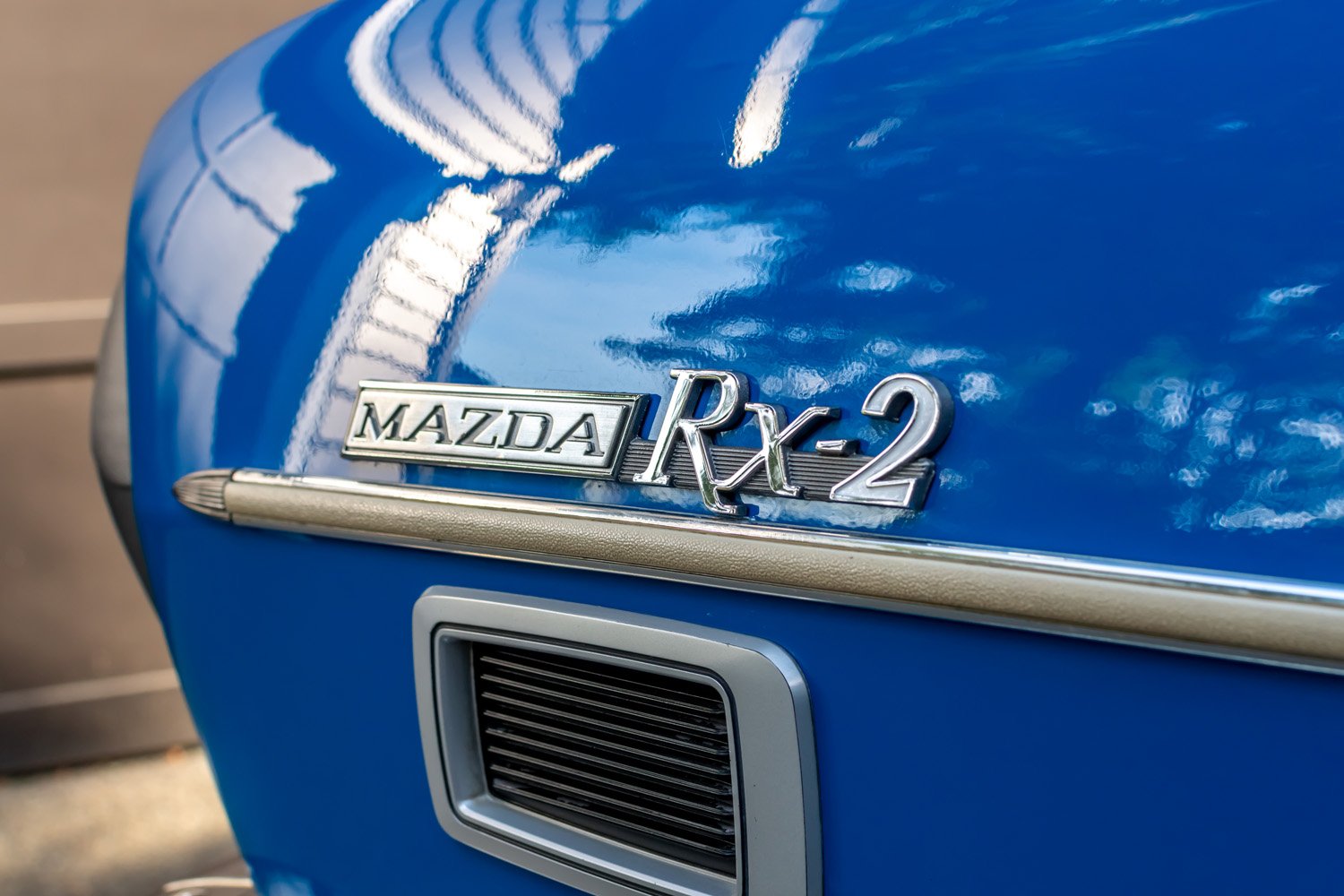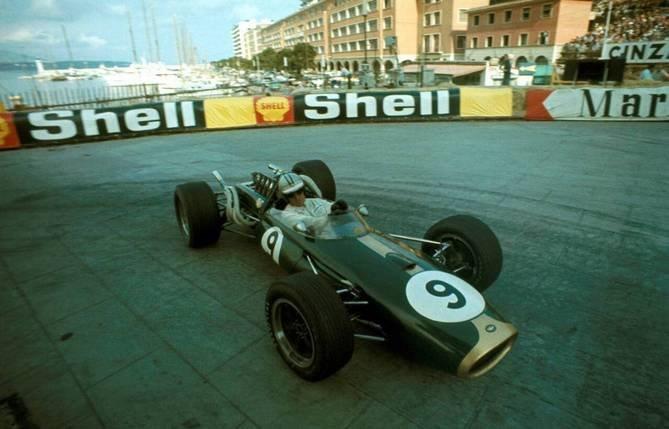Finding an unmolested Mazda rotary isn’t an easy task as many examples have been seriously modified. Finding two near perfect examples is very rare indeed
Photography by Blissful Photography

When Mazda procured a licence to build Wankel engines from NSU in 1961 it had already established itself as the third-largest Japanese car manufacturer. The radically designed Wankel powerplant, both lightweight and compact, seemed a perfect example of Japan’s knack for refinement and miniaturisation. With those factors in mind, Mazda planned an entire range of rotary-powered cars, starting with the fabulously styled Cosmo 110S of 1967.
By the early ’70s, the master plan was coming together, meaning an equivalent rotary-engined car for each conventionally powered Mazda. Hence the 616 had an RX-2 counterpart, the 808 the RX-3, and the 929 the RX-4. However, by the time the RX-5 arrived in 1975, rising fuel prices and the difficulty of cleaning up the rotary’s dirty emissions was taking its toll, despite Mazda having overcome the reliability issues that had crippled NSU’s own ambitions. Despite being so successful in winning the 1991 Le Mans 24 Hours that rotary engines were effectively banned from sports car competition, Mazda had no choice but to draw back from providing a whole range of rotary-powered cars. The new powerplant was limited to a single performance model — the RX-7.
Sadly, the engine’s emissions finally led to Mazda removing the RX-8 from the European market in 2010, and by 2012 it ceased production altogether.
While the strategy might ultimately have been a failure, Mazda’s bold experiment gave us that very rare thing, a series of cars that were fully developed and perfectly well-executed with a completely unique character. That they were also short-lived now only adds to their rarity and value.
Interestingly, after a 10-year hiatus Mazda has developed a small rotary engine for a hybrid version of its MX-30 as a range extender. A small and smooth engine that delivers high power at high revs is theoretically well suited to duty as a generator but it’s not in the local market MX-30 PHEV, which gets a conventional 2-litre piston engine driving the wheels.
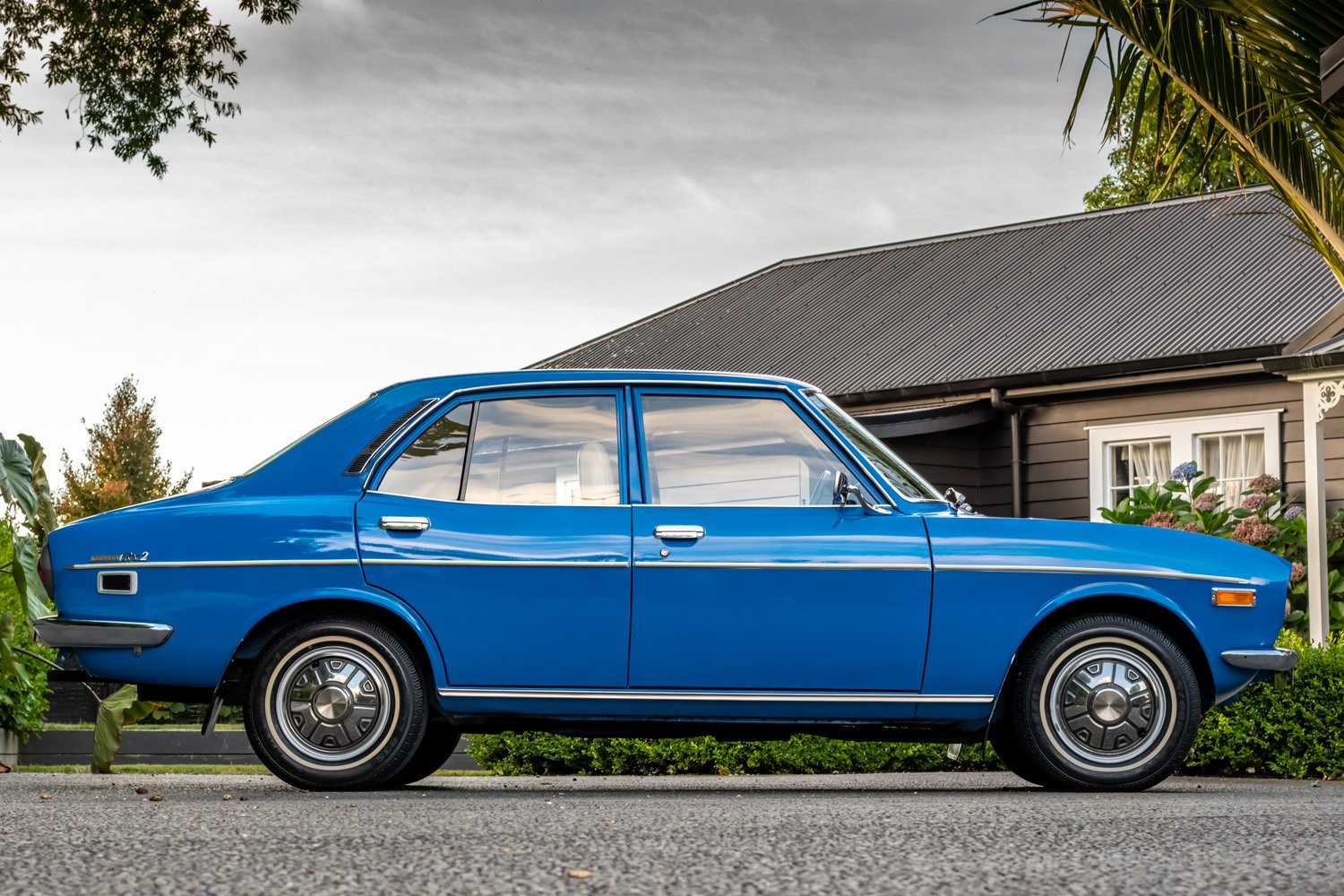

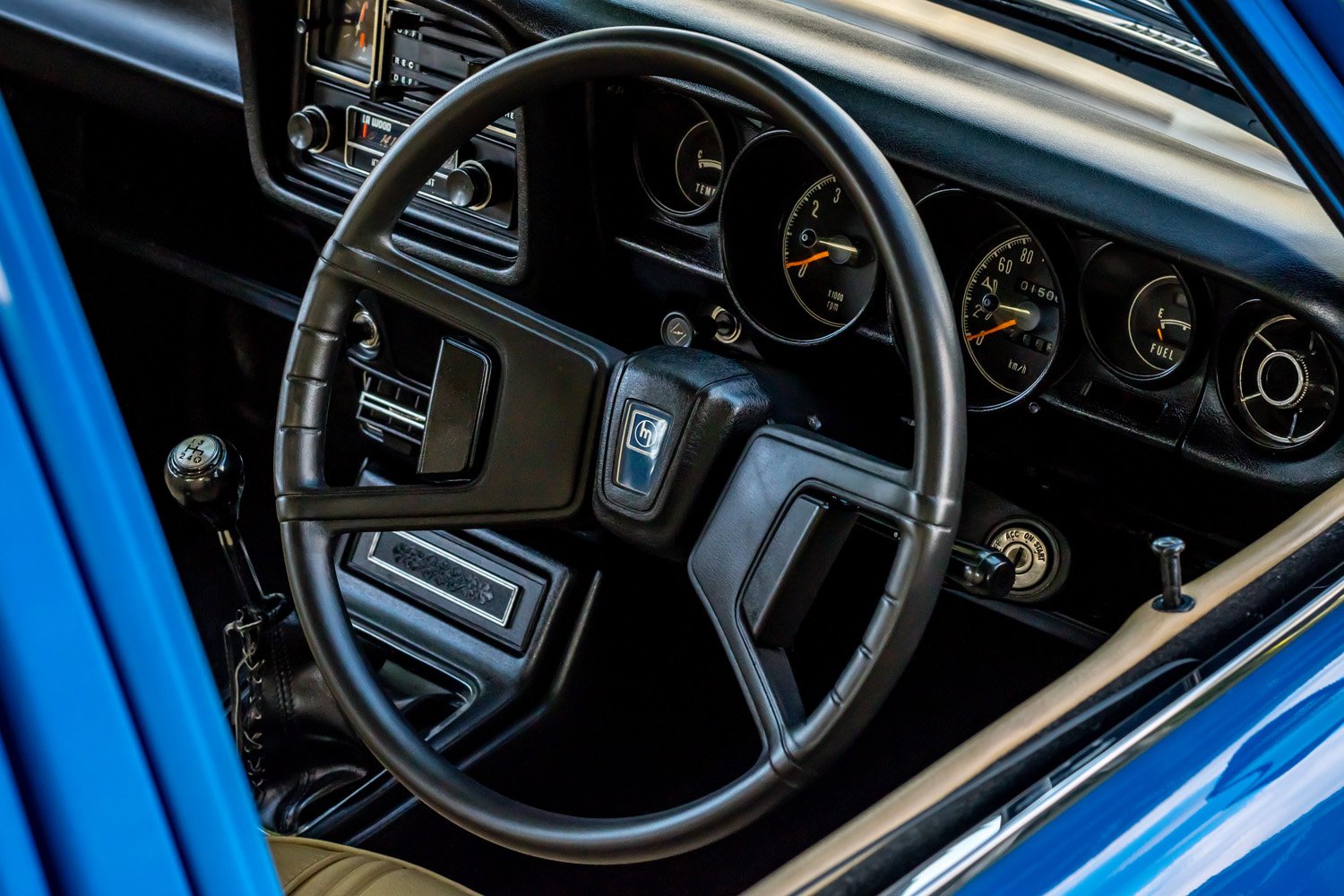
A story to share
To say that Tauranga-based Nicala Cooper is a bit of an enthusiast for rotary-powered Mazdas is something of an understatement. She purchased this sublime New Zealand-new, 1975 Series 3 RX-2 12A four-speed sedan in 2001. The car is finished in factory Wanaka Blue with Bone vinyl trim and, having seen only two prior owners, has just clocked over 100,000 kms. Even more remarkably, it shares garage space with her equally impressive, Australian-new 1972 RX-3 10A four-speed Coupé, finished in factory Earth Green with Burnt Orange vinyl trim, which has only travelled 46,000 miles (74,000km). Nicala points out that both cars are ‘matching numbers’ with complete original running gear intact, making an extremely rare pair in this day and age.
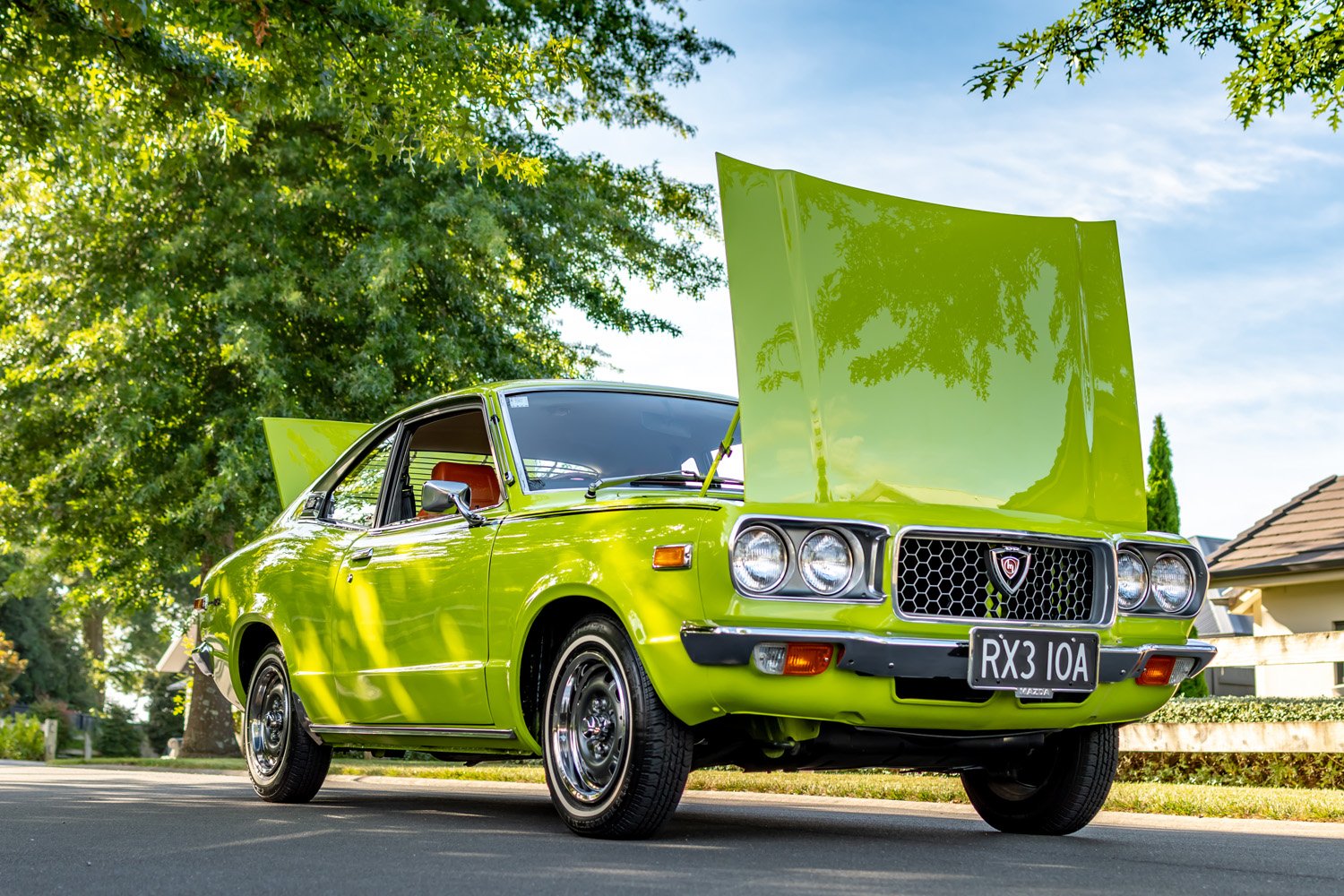
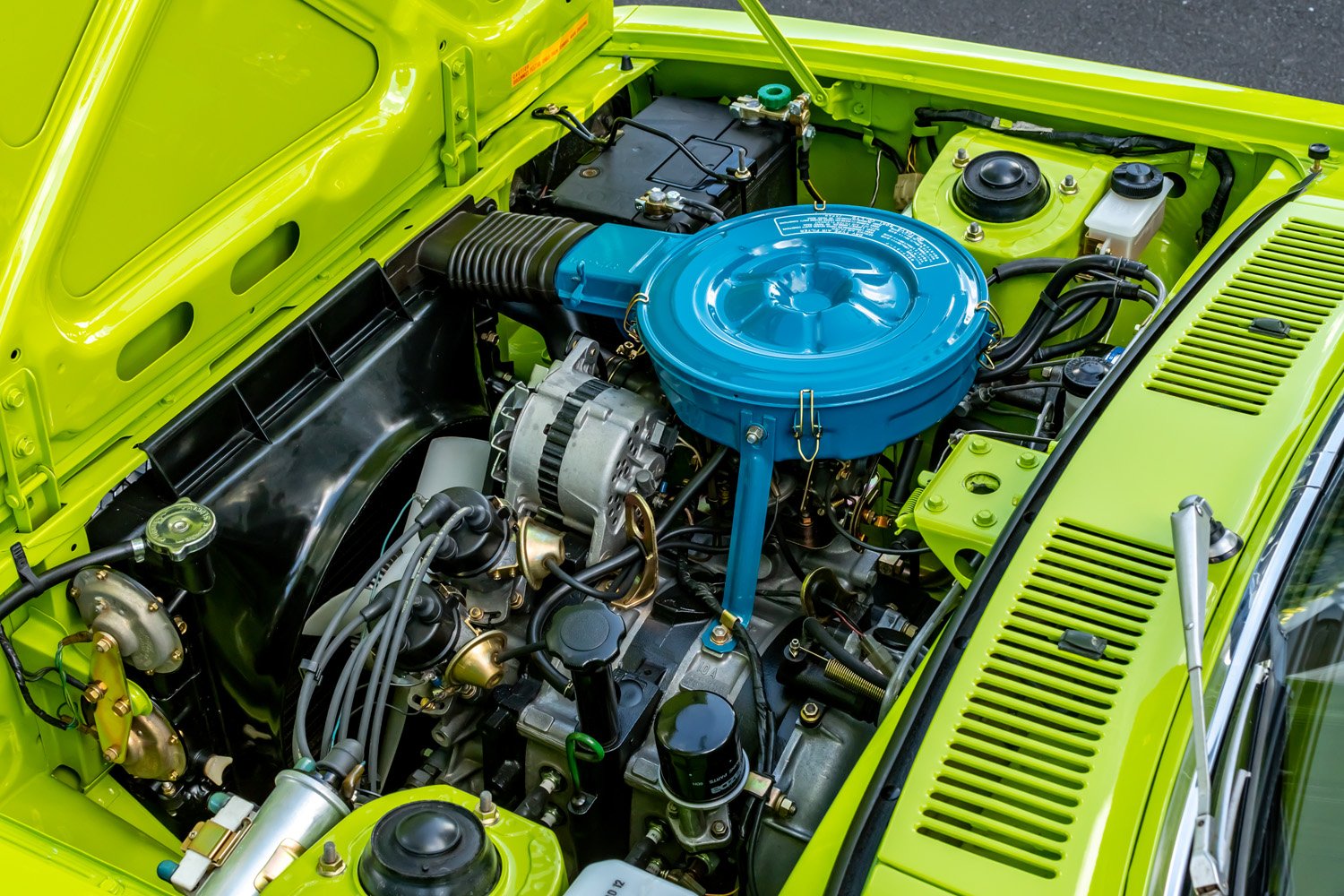
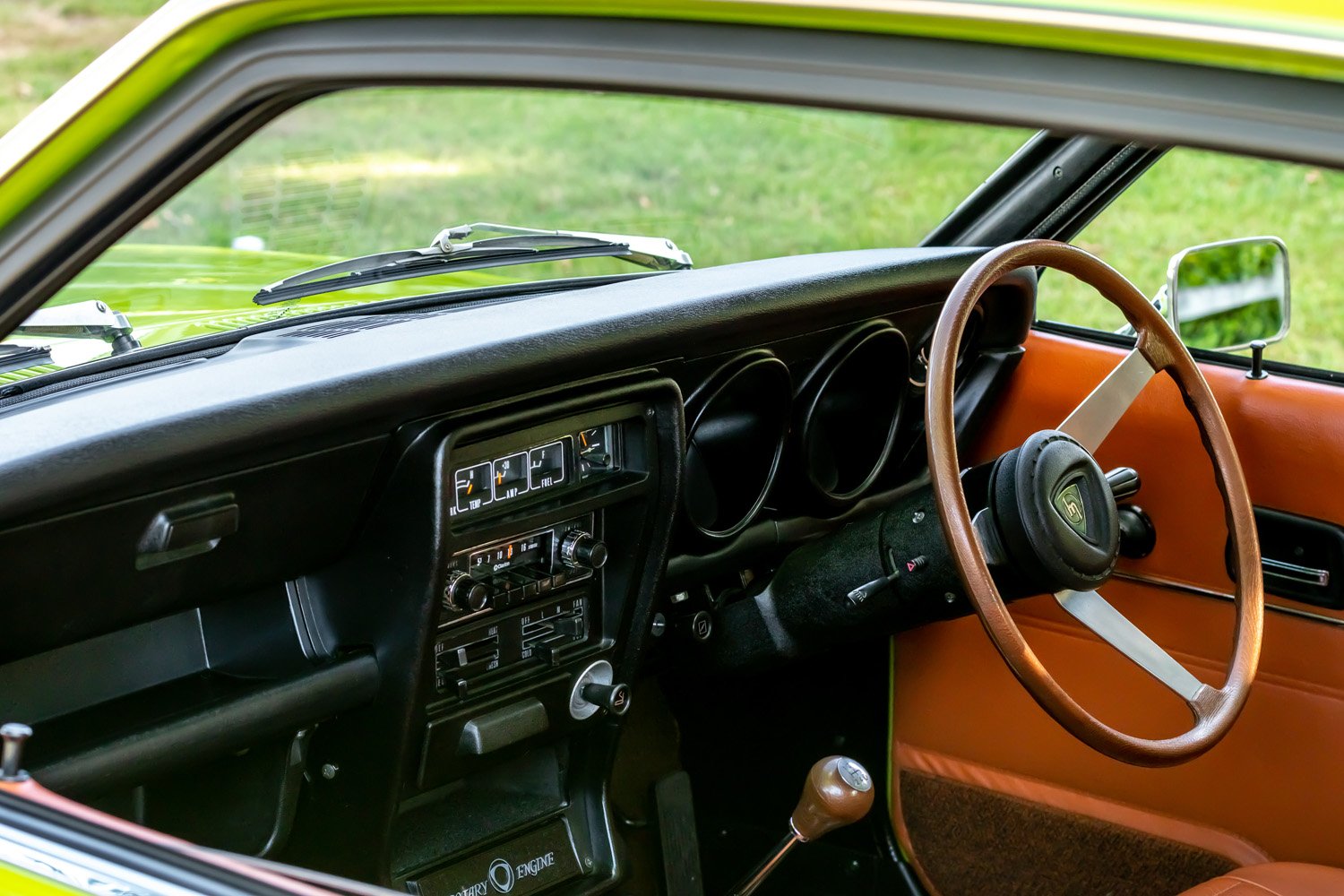
Nicala takes up the tale:
“It is no surprise I love Japanese classics. Growing up in the ’80s, my father was importing Japanese cars to the extent that our entire front paddock was full of Japanese imports, including a number of early model RX-7s. I had dolls and all the usual stuff, but loved playing in the cars and the DC3 aeroplane (also in the front paddock at the time), which now sits above a fast food outlet in Taupo (my hometown). I recall my older brothers and I used to get pocket money for cleaning the imports as they arrived at the family farm (often two transporters full per day). My first car was a Mazda, hand selected by my father in Japan for me when I was about 17 years old.
Mazda genes
“I recall when I was in my late teens/early twenties and I had just met my now-husband Dave. On one of our first dates he picked me up from our family home in his RX-3 sedan with race seats, lowered and louder than hell. He soon after sold that particular car and through my brother managed to purchase a ’73 RX-4 coupé from Taupo which kept the Mazda theme going. A few years later we were at the Rotary Nationals drag day at Meremere and I decided to go for a wander through the pits and found a stock standard RX-2 which I attempted to purchase. After a bit of haggling, the owner said he really didn’t want to sell, but he knew of an RX-2 that was also in factory condition and the owner was about to sell it. We put two and two together and realised that Dave’s RX-4 had been parked next to this particular RX-2 the day prior at the Rotary Nationals Show and Shine and we knew the car was unbelievable. A phone call that night and the next day we were off to Tuakau with a trailer to purchase the car.
“Negotiations commenced, the car was as it rolled out of the factory, and its documented history was extensive, including its purchase receipts from Giltrap Mazda and first-ever service receipt for $11.79 in 1975. I made an offer on the car, which wasn’t accepted and I was actually happy to walk away, however Dave jumped in and offered another $1,000 and a deal was done. I recall having to borrow money off Dave to pay for the car and I am not entirely sure if I actually repaid him! That was how ‘Nana’ became part of our family. We have done all we can to keep her in factory condition, even to the extent of keeping the original tyres but eventually accepted they had to be replaced when we couldn’t keep the car in a straight line at 100kph. We also took the monsoon shield off of the driver’s window which would have been a desirable optional add-on back in the ’70s for smokers, but with the car not having AC, it also prevented essential air flow in the heat of summer. She has won a number of awards at the Rotary Nationals for Best Original Rotary and Best Original Interior.
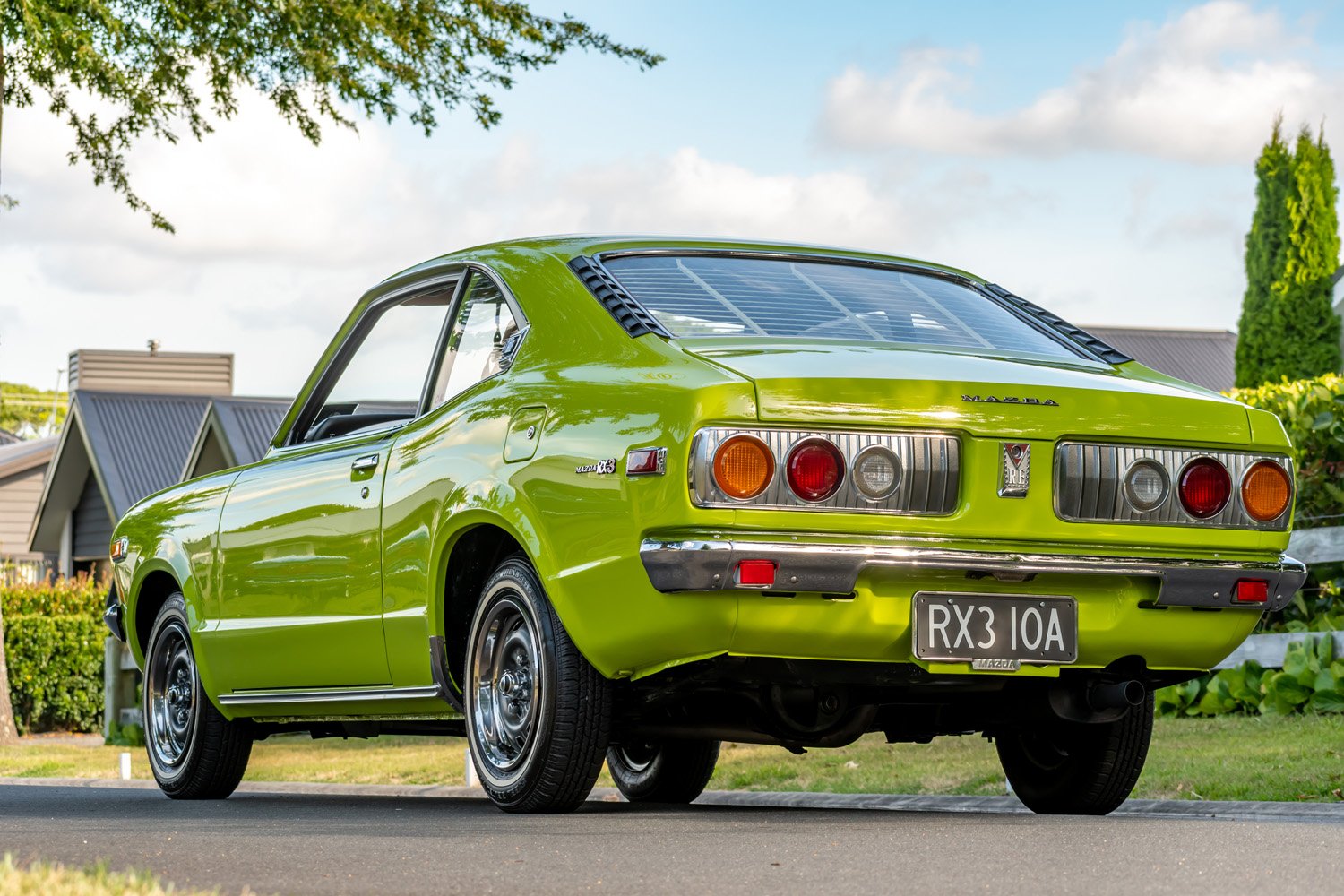

Regrets and new love
“Some years later, and after completing some serious modifications, Dave sold his RX-4 coupé to its previous owner — and we have regretted the sale ever since. With the dramatic rise in the value of old Mazdas over the years, I was keen to add another coupé to the collection. After searching for a couple of years with no luck, my family let us know about a matching numbers Earth Green 10A ’72 coupé in Australia that could possibly be purchased. The photos of the car were incredible and I knew I had to have it.
“We were headed to Lake Waikaremoana [to go] tramping and knew we would be off the grid, so left negotiations in the hands of my family. My father wanted to know what we thought he should pay and I recall saying, ‘You know what you are doing … I trust you.’ That was a challenging four days not knowing if the car had been purchased or not. Once I came off the track and turned on my phone as soon as I could get reception, there was a message to say that I owned the coupé and it would be in NZ in four weeks. Well, you can only imagine the excitement!
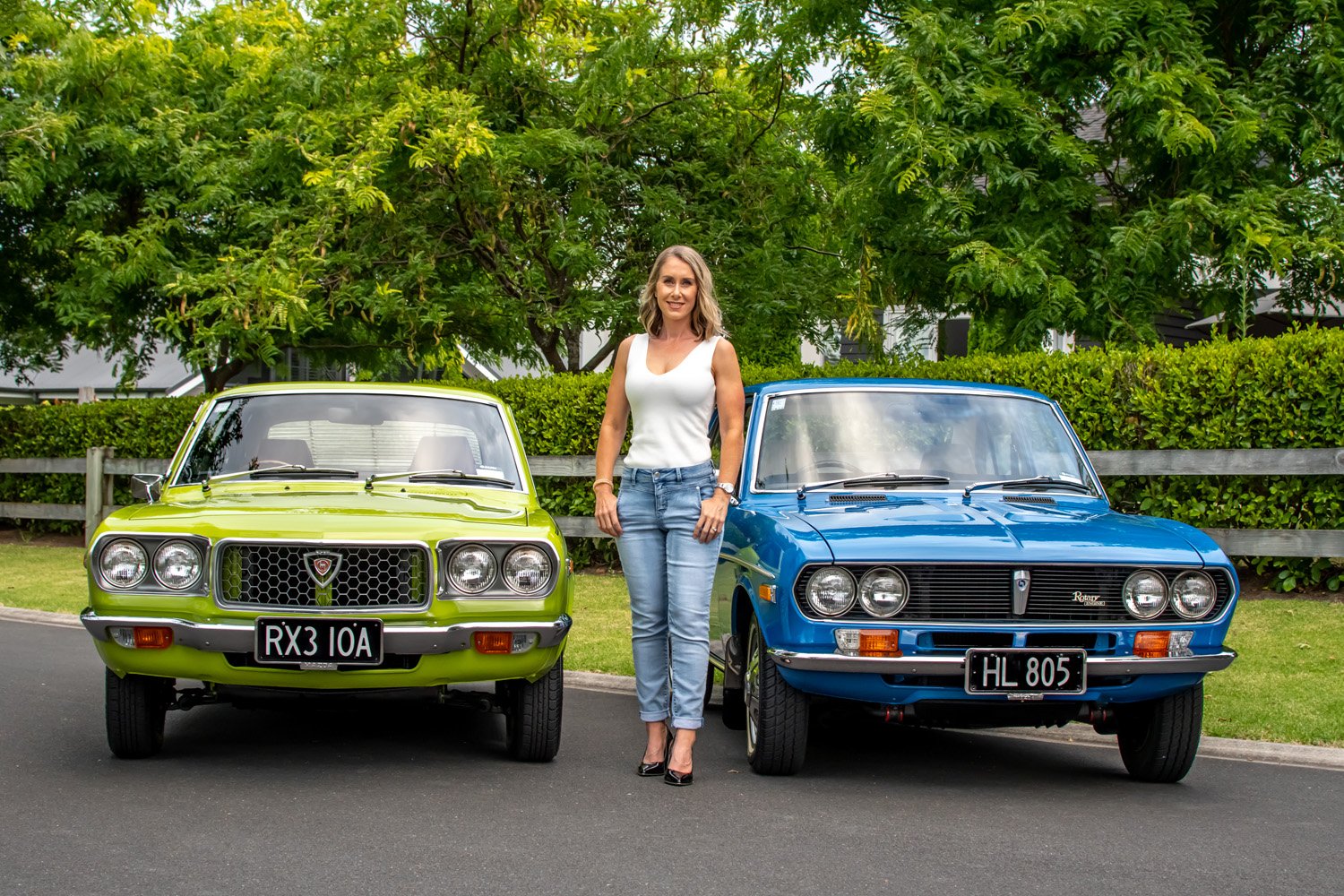
“After travelling via boat, train, and truck, ‘Kermit’ — there was simply no other name for him — arrived in New Zealand during the first Level 4 lockdown and, with Covid restrictions, I couldn’t see the car for weeks. But when I did, it was love at first sight. I try not to have a favourite but you just can’t beat a coupé! There is nothing better than a Sunday cruise in one of the cars and getting behind the wheel of either of them certainly brings an instant smile. I am quietly relieved that Dave has recently (finally) purchased a replacement RX-4 coupé which is in the ‘build’ phase and will certainly not be factory like these two. He has, however, promised me – no turbos, drop tanks and sparkly paint and I will hold him to it.
“Like anything old, the cars require maintenance in order to see them preserved for years to come. I have an amazing group of family and friends who are always willing to lend a hand. I hope they know how genuinely thankful I am for their support and expertise.”

